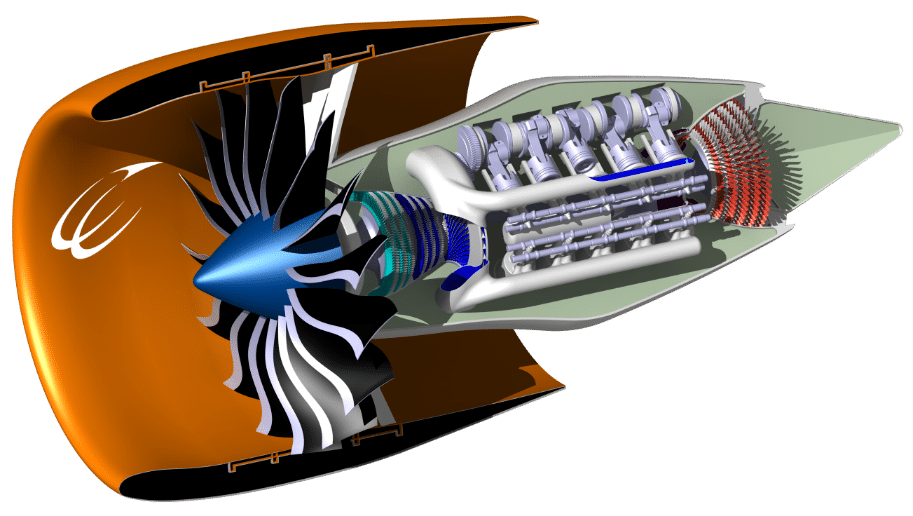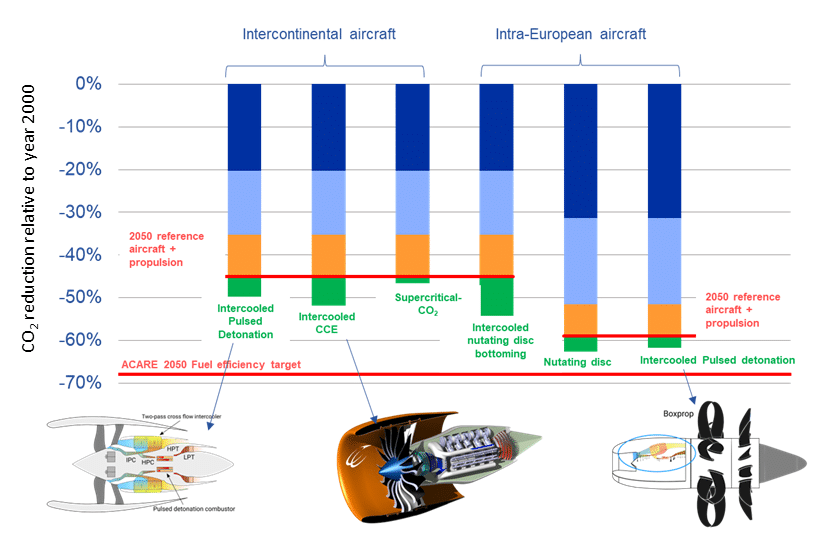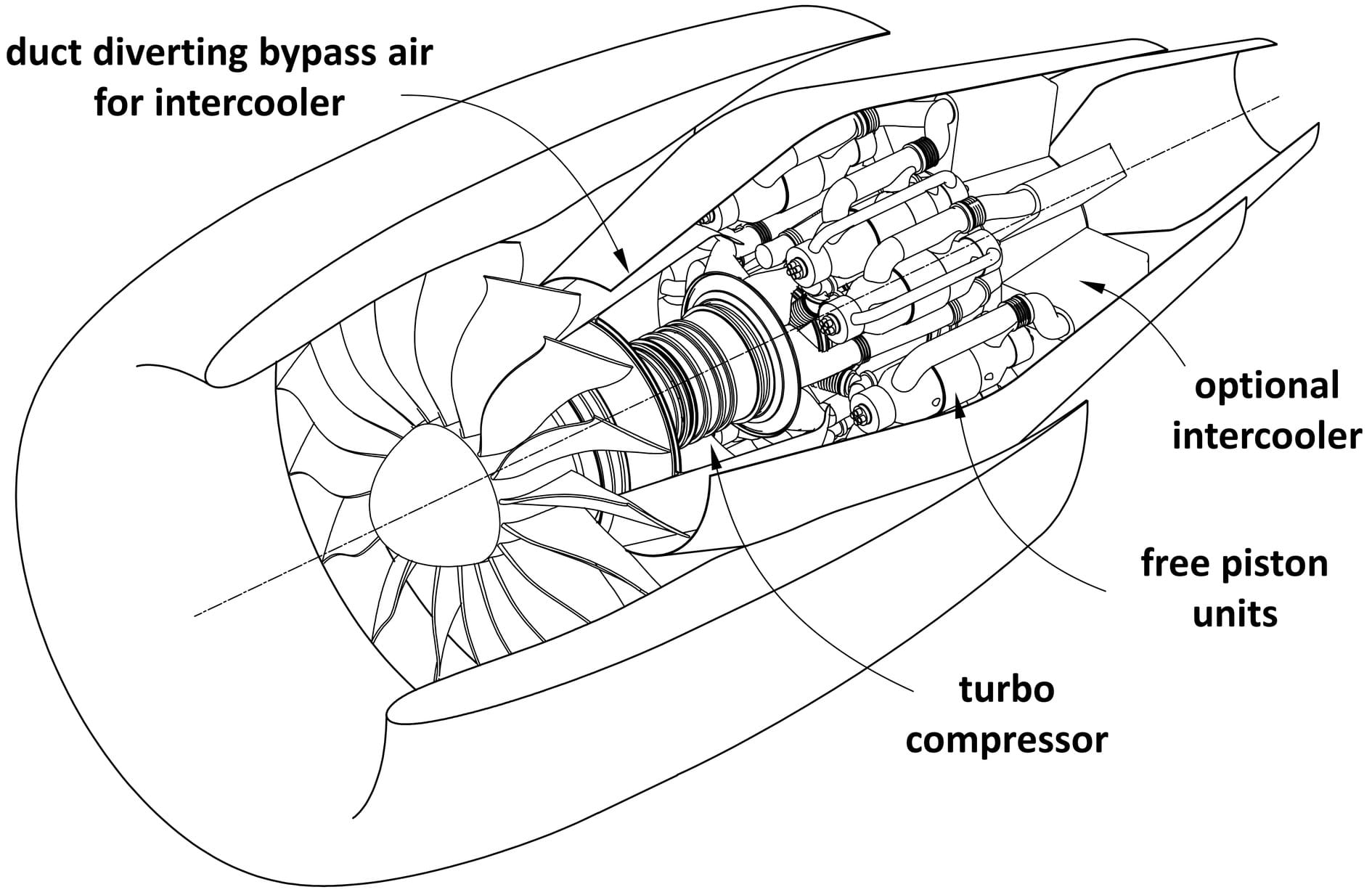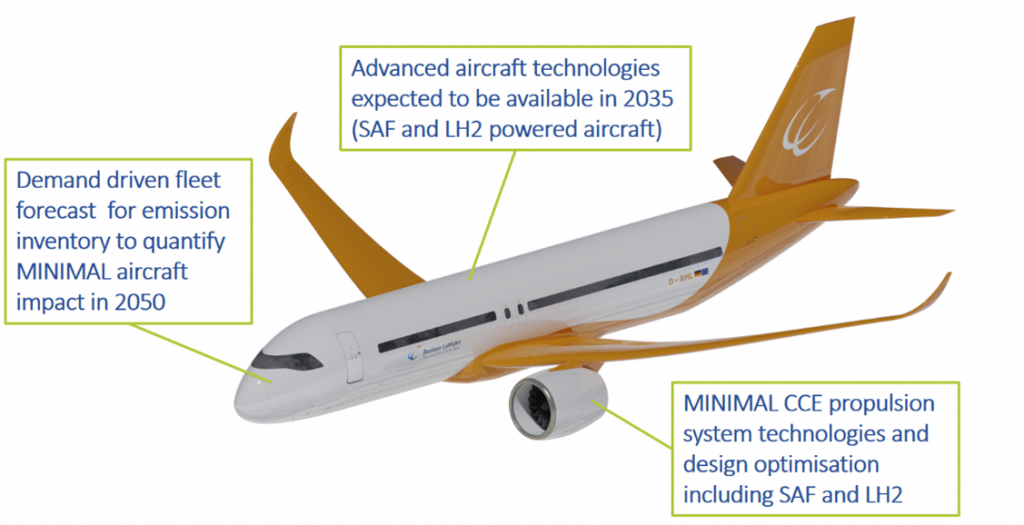Technologies
Technologies used in the MINIMAL
The Composite Cycle Engine (CCE) combines a gas turbine and a piston engine into one concept. This unique concept increases thermal efficiency due to the extremely high peak pressure and temperature within the cylinders and provides a two-digit improvement in fuel burn relative to state-of-the art aeroengines.

Conceptual design of Composite Cycle Engine
MINIMAL aims to optimize the CCE core technology, that was downselected in the H2020 ULTIMATE project, towards minimum climate impact. The baseline was previously established in ULTIMATE, where propulsion systems that could target the three major loss sources in state-of-the-art gas turbine engines were systematically searched and down-selected. Combinations of engine core technologies were studied as shown in the Fig below, including: heat recovery using recuperation; supercritical CO2 bottoming cycles: intercooling; pulsed detonation; nutating-disc and piston-based topping cycles; and secondary combustion.
Key ULTIMATE outcomes showed:
- Constant volume combustion cycles can break the current technological barriers of cooling requirements and turbomachinery size effects and go beyond 150 in overall pressure ratio, but good designs are needed to address performance reduction due to vibration, sealing loss, high heat rejection to oil and mechanical speed limitations.
- Intercooling has a strong synergy with constant volume combustion by increasing gas density and limiting weight increase associated with piston systems. It also reduces NOx emissions significantly.
- Constant volume cycles, relying on piston-topping technology do not suffer from the same detrimental efficiency effects of conventional gas turbines in part-load operation or when scaled-down to smaller engines.
- For ultra-efficient engines with the potential for reduced impact on climate, CCE turbofan and turboprop architectures with intercooling and constant volume combustion were found to have the best potential.
The work carried out in ULTIMATE targeted the development of crankshaft-bound CCE derivations, converging into a final configuration where two V10 4-stroke engines are mechanically connected to the high-pressure spool of the gas turbine, through a two-stage spur gear configuration (Figure above). The piston engine is therefore used as a topping cycle providing heat addition and gas work by driving a 2+1 axial-radial compressor. Despite all the technology included in the year 2050 reference airframe and propulsion system, the addition of the radical technology does not suffice to reach the ACARE 2050 fuel efficiency targets (Figure below). MINIMAL will address this by replacing the energy carries with carbon-free (or carbon neutral) fuels together with climate friendly optimized routing and operations.

The free-piston composite cycle engine (FP-CCE) is one of the cutting-edge technology of the MINIMAL project. The FP-CCE focuses on reducing CO2 emissions by combining turbofan architecture with piston engines. The concept combines the turbofan engine architecture with a piston engine and targets an increase in engine efficiency and a reduction in fuel burn and CO2 emissions.

A schematic illustration of the FP-CCE is shown on the above figure. After the fan, the mass flow is separated into a bypass stream and a core stream. The core mass flow is then further compressed in a turbo compressor similar to a conventional turbofan. The flow then enters the free-piston gas generator, which consists of two parts – the piston engine and the piston compressor.

The free-piston engines can be placed freely within the engine core, as only a fluidic connection to the core engine is required. It is suggested to arrange the free-piston devices circumferentially around the engine center axis close to the combustor and where originally the high-pressure compressor was located as illustrated in the figure on the right.

The proposed technologies are scalable and are going to be integrated into the next generation of short-, medium- and long-haul aircraft. The short-range configuration will be designed for operational flexibility (altitude and speed) to be able to avoid climate-sensitive regions and will operate on liquid hydrogen. The medium-range configuration will be optimized for best cost and high volume, to meet the current demand in the middle-of-the-market aircraft. The long-range aircraft aims to offer the best efficiency. In the MINIMAL scenario, the medium-to-long range market will be powered by sustainable aviation fuel.

